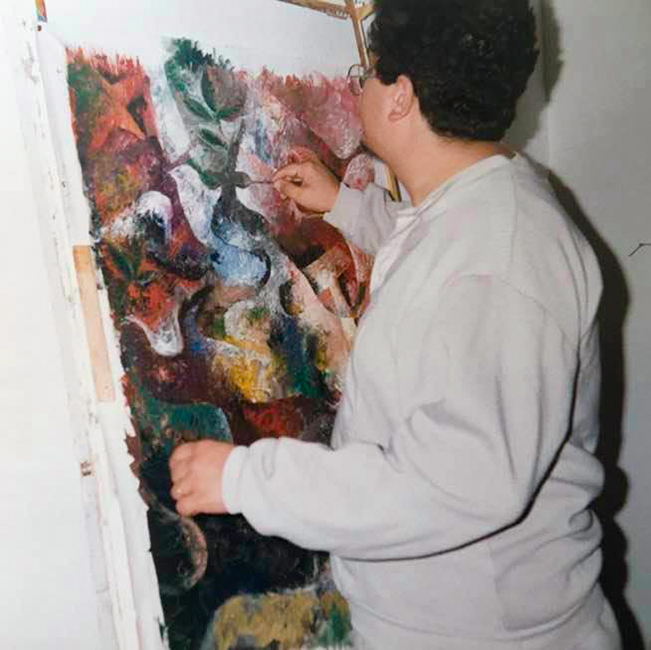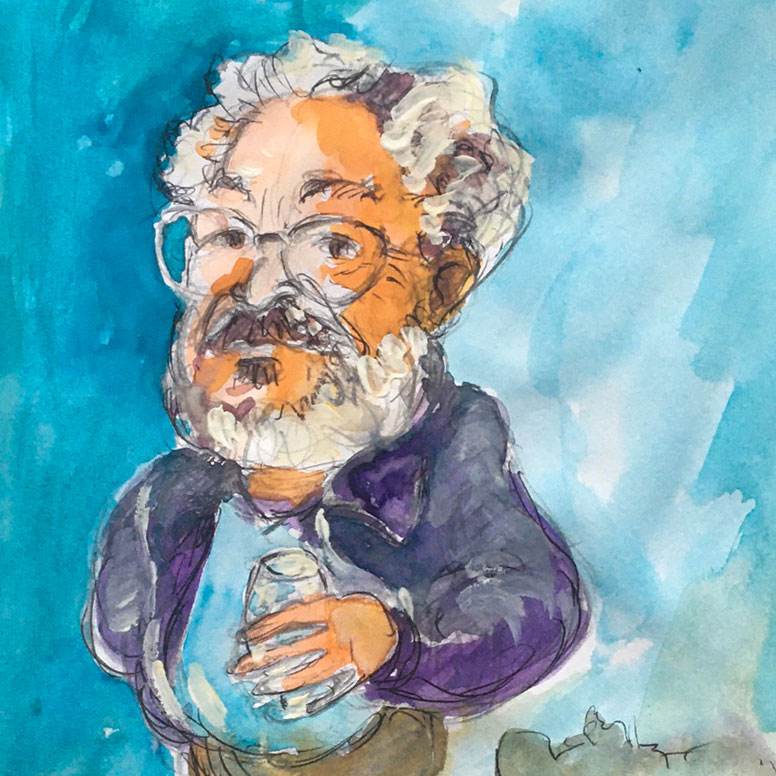Artist statement
In John Baldacchino’s studio practice he mainly works in two-dimensional media, although in his artistic education he specialized in both painting and sculpture. His studio interests extend to publishing, typography, and graphic design. His graphic art covers web-design, illustration, layout and cover design. As a graphic designer he designed and illustrated a series of Italian textbooks, children’s Italian readers, and cover-design and layout- and page-setting of several academic books. He also contributed as a freelance political cartoonist in weekly and monthly newspapers and magazines. He exhibited in solo and collective shows in the UK, Europe, the US and Asia and he mostly works in two-dimensional (mixed) media.

§21. Memory's Counter-Offensive
Human expression is a multiple narrative that reveals a quest characterised by an exchange between sacrifice and happiness. As art, this exchange is constructed by the lives of women and men who fight and die by way of a nostalgic humanity in which they vest their hopes and sense of belonging. A nostalgic humanity pertains to a memorial polity moved by the will to return and reclaim by force of the homecoming—the nóstos—of freedom and democracy, whose time scale is plural by way of its many ends.
This memorial polity enfolds through a history that stands out of the myth of necessary time. The myth of necessity considers human history as a series of curtailed stories where memory is substituted by the fallacy of viable ends. As the leading ideology of ‘viability’, contemporary empiricism—like its bedfellow, practicism—deliberately precludes wonderment and prevents the grammar of contingent time from human history. (pp. 39-40)

§25. Avant-nostalgia
The measure of anamnesis is primarily exercised on grounds where the métiers of memorial politics are legitimised by everydayness, and not by the laws of historicism. Such quotidian narratives alter the tables of legitimacy and claim an autonomous stake in the poetics of reality—as art. If this does not occur, then the autonomy with which art could claim to establish and legitimise difference (though it is not implied that art functions as such automatically, everywhere and always) will be aborted by the identitarian syntax of amnesia. (pp. 46-47)
John Baldacchino, Avant-Nostalgia: An excuse to pause. Jeremy Diggle (images). (Aberdeen: Unit for the Study of Philosophy in Art [USOPIA] 2002).
